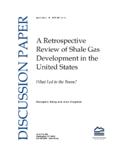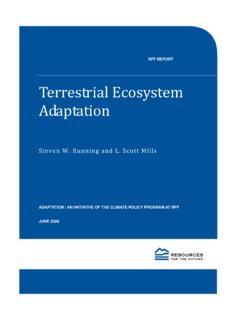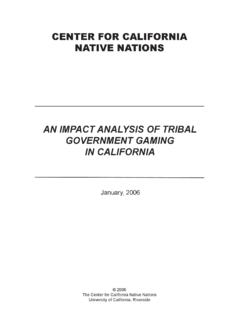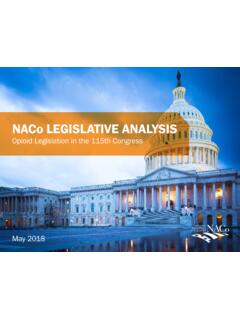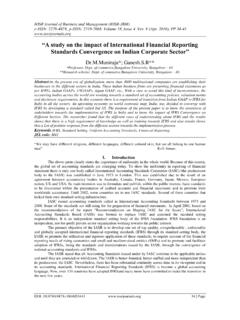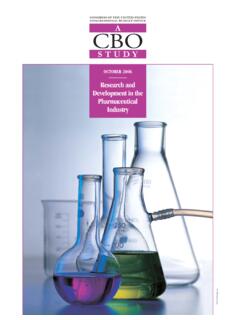Transcription of Environmental Implications of the Foodservice and Food ...
1 Environmental Implications of the Foodservice and Food Retail Industries Terry Davies David M. Konisky Discussion Paper 00-11. March 2000. RESOURCES. for the future 1616 P Street, NW. Washington, DC 20036. Telephone 202-328-5000. Fax 202-939-3460. Internet: 2000 Resources for the Future. All Rights Reserved. No portion of this paper may be reproduced without permission of the authors. Discussion papers are research materials circulated by their authors for purposes of information and discussion. They have not undergone formal peer review or the editorial treatment accorded RFF books and other publications. Davies and Konisky RFF Discussion Paper 00-11. Environmental Implications of the Foodservice and Food Retail Industries Terry Davies and David M.
2 Konisky ABSTRACT. The growing size and importance of service sector industries in the economy raises questions about the suitability of the current Environmental management system to deal with perhaps a changing set of Environmental concerns. This paper analyzes the Environmental impacts associated with the activities undertaken and influenced by two service sector industries Foodservice ( , restaurants) and food retail ( , grocery stores). This paper is not a definitive analysis of the magnitude of the Environmental effects of these industries, but is intended to be a comprehensive survey of the types of Environmental Implications positive and negative of these two service sectors.
3 The Foodservice and food retail industries are components of a larger industrial system, the food marketing system, that extends from the production of food to the marketing of food products to consumers. The Foodservice industry comprises an estimated 831,000 individual establishments, employs an estimated 11 million people (about of the workforce), and is expected to have total sales of $376 billion in 2000. The food retail industry encompasses approximately 126,000 grocery stores, employs approximately million people (about of the workforce), and had sales totaling $449 billion in 1998. For this analysis , we use a simple conceptual framework that segregates the Environmental impacts of these industries into three categories: direct, upstream, and downstream.
4 We conclude that, while the direct Environmental impacts ( , energy use, solid waste generation; air and water emissions; food safety concerns; refrigerants) of these industries are important to recognize and address, opportunities also exist for these industries to address their upstream and downstream Environmental impacts. Key Words: Foodservice ; food retail; service sector; Environmental impact analysis ;. sector Environmental profile ii Davies and Konisky RFF Discussion Paper 00-11. TABLE OF CONTENTS. Abstract .. ii v Executive Summary .. vi Direct Environmental vii Energy Consumption .. vii Solid Waste Generation .. vii Air Emissions .. viii Water Emissions .. ix Food Safety Foodborne Diseases.
5 Ix Refrigerants .. x Upstream Environmental Impacts .. x Vertically Integrated xi Contracts .. xii Strategic Alliances .. xii Wholesaler Supply Channel .. xii Downstream Environmental xiii Responses to Changes in Consumer Preferences .. xiv Information Provision .. xv Policy Implications , Opportunities, and xvi Introduction .. 1. 1. Conceptual Framework .. 3. 2. Overview of the Foodservice and Food Retail Industries .. 6. Foodservice Industry .. 6. Food Retail Industry .. 12. 3. Direct Environmental 17. Energy Consumption .. 18. Solid Waste Generation .. 22. Food Waste .. 23. Packaging Materials .. 26. Air Emissions .. 30. Water Emissions .. 32. Food Safety Foodborne Diseases.
6 33. Refrigerants .. 37. Land Use Impacts .. 38. 4. Upstream Environmental 39. Vertically Integrated 47. 47. 50. Contracts .. 52. Strategic Alliances .. 54. Wholesaler Supply Channel .. 56. Retailers Influence on Upstream Environmental Issues Three Examples .. 58. 59. Animal 62. Food Safety .. 64. iii Davies and Konisky RFF Discussion Paper 00-11. 5. Downstream Environmental 68. Responses to Changes in Consumer Preferences .. 69. Information Provision .. 73. 6. Policy Implications , Opportunities, and Conclusions .. 76. References .. 80. TABLES AND FIGURES. Table Foodservice Sales, by Market 8. Table Commercial Foodservice Sales, by Industry Segment .. 9. Table Top 25 Chain Restaurants, by Sales, 10.
7 Table Noncommercial Foodservice Sales, by Industry Segment .. 11. Table Food Retail Industry Sales, by Store Type, 13. Table Supermarket Formats, by Number and Share of 14. Table Top 25 Food Retailers, 1998 16. Table Major Fuel Consumption of Foodservice Industry, by End Use, 18. Table Major Fuel Consumption of Food Retail Industry, by End Use, 20. Table Solid Waste Stream analysis for Selected Foodservice 22. Table Food Losses From Edible Food Supply at Retail, Foodservice , and Consumer Levels for Selected Foods, 25. Table Packaging Waste in Selected Foodservice Operations, by 27. Table Grocery Packaging Generation, by Packaging 29. Table Estimated Cases of Illness and Death from Major Bacterial Pathogens, 1996 35.
8 Table Recent Foodborne Illness Outbreaks Traced to Restaurants .. 36. Box Vertical Coordination in the Food Marketing System and its Potential Environmental Implications .. 43. Table Largest Grocery Wholesalers and BroadlinE Foodservice Distributors, 1998. Sales .. 57. iv Davies and Konisky RFF Discussion Paper 00-11. PREFACE. This paper analyzes the Environmental impacts associated with the Foodservice and food retail industries, with a focus on the activities of restaurants and grocery stores. The paper is not a definitive analysis of the magnitude of the Environmental effects of these industries, but is intended to be a comprehensive survey of the types of Environmental impacts positive and negative of these two service sectors.
9 A small workshop was held at Resources for the Future (RFF) in January 1999 to discuss the Environmental Implications of the service sector. The diverse attendees, including representatives of government, industry, Environmental groups, and academia, provided a variety of perspectives on our research. A small breakout group devoted its attention to the Foodservice sector and identified a number of important issues confronting the industry. We would like to thank participants in the workshop for their insights and contributions to this research. A number of individuals also provided valuable comments on a previous draft of this paper. In particular, the authors would like to thank Braden Allenby, Tom Beierle, Andrea Clarke, and David Rosenberg.
10 This study is one in a series of analyses conducted by RFF's Center for Risk Management to better understand the Environmental effects of service sector activities and the Implications for Environmental management strategies. In addition to the Foodservice and food retail industries, the other service sectors examined were health care (Davies and Lowe, 1999) and tourism (Davies and Cahill, 2000). This research was sponsored by the Environmental Protection Agency's Emerging Strategies Division (ESD) under cooperative research agreements #821574 and 826527. We are grateful to Dan Fiorino, Joe Reinert, and Lutrician Booth of ESD for their advice and support. v Davies and Konisky RFF Discussion Paper 00-11.


